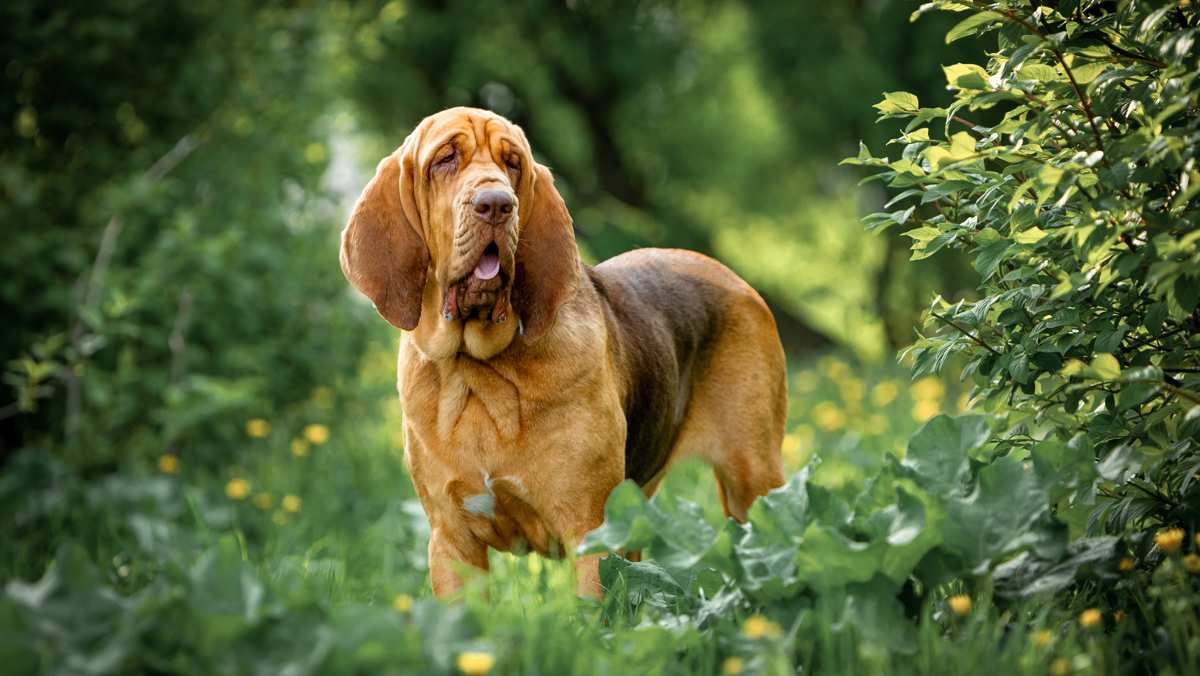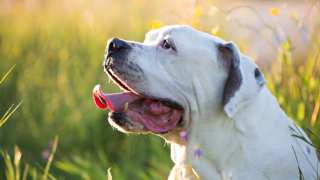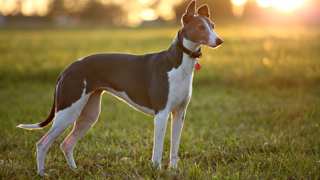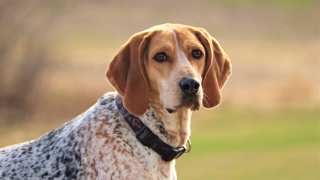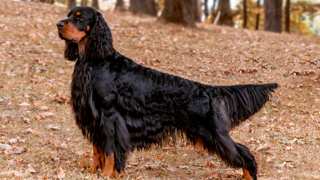Do Bloodhounds stink? Unfortunately, they often do. These hunting dogs can develop a not-so-pleasant Bloodhound odor if not bathed regularly. Your Bloodhound bath will need to happen at least once a month, or more often if the Bloodhound smell is bad.
It's also important to use canine shampoo when bathing a Bloodhound. The best shampoo for a Bloodhound includes brands like Earthbath, Vet's Best, and Rocco & Roxie--all of which will make your Bloodhound smell fresh and clean.
How to bathe a Bloodhound: first give the coat a good brushing. You can bathe your Bloodhound either in a bathtub (which hopefully has a spray nozzle attachment) or in an outdoor plastic pool using a garden hose. Wet the coat thoroughly, then apply some Bloodhound shampoo to the dog's back. Lather well, working downward and outward as you go. (And don't forget the legs, underbelly and tail!) Next clean the head, ears, and face with a washcloth; pay extra attention to the skin folds, and to the tips of the low-hanging outer ears (which can get dirty when the dog drags them on the ground while sniffing). Rinse the coat completely, towel-dry, then give the dog another quick brush-through.
Bath-time is also a good opportunity to clean your Bloodhound's ears. These dogs are known for getting ear infections more frequently than other breeds, because the inner ear collects dirt, grass, and other debris.
How to clean Bloodhound ears: use canine ear cleaning solution. Be sure to follow the manufacturer's instructions, but the usual process is to squirt some solution into the ear canal, close the ear flap, then massage the outer ear for a few seconds to work in the liquid. The dog will probably shake its head vigorously--this is normal--and then you can use a cotton ball (never a Q-Tip!) to wipe out any remaining solution.
